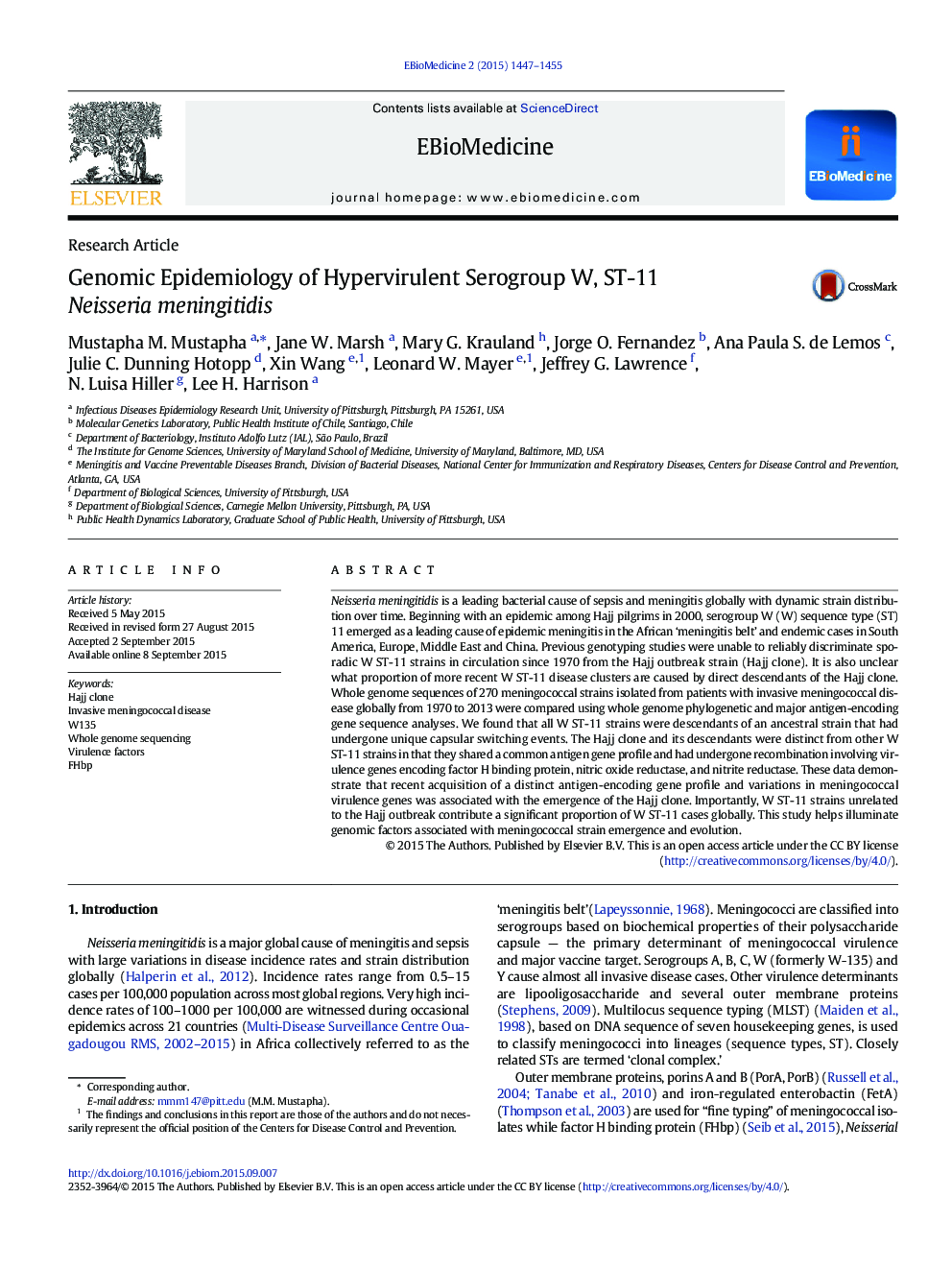| کد مقاله | کد نشریه | سال انتشار | مقاله انگلیسی | نسخه تمام متن |
|---|---|---|---|---|
| 2121233 | 1085772 | 2015 | 9 صفحه PDF | دانلود رایگان |

• Genomic characterization of serogroup W ST-11 of Neisseria meningitidis..
• Epidemic W ST-11 strain (Hajj clone) emerged through recombination affecting virulence genes.
• Both the Hajj clone and W ST-11 strains unrelated to the Hajj outbreak have persisted globally.Neisseria meningitidis, a bacterial cause of frequently fatal brain (meningitis) and blood stream (sepsis) infections, has variable strain distribution over time. Serogroup W sequence type 11 (W ST-11) lineage is associated on one hand with strains causing only rare (sporadic) disease cases, and the Hajj clone – a major global cause of epidemic and endemic meningococcal disease. In this study we analyzed complete genome sequences of a global collection of 270 W ST-11 isolates causing meningococcal disease from 1970-2013. The Hajj clone acquired novel gene sequences within genes involved in nitrogen metabolism (nitrogen oxide reductase, nitrite reductase) and evasion of human immune response (factor H binding protein). These genes may be the cause of increased virulence of the Hajj clone and can be used to trace continuing spread of the clone. These results shed light on mechanisms of meningococcal strain emergence.
Neisseria meningitidis is a leading bacterial cause of sepsis and meningitis globally with dynamic strain distribution over time. Beginning with an epidemic among Hajj pilgrims in 2000, serogroup W (W) sequence type (ST) 11 emerged as a leading cause of epidemic meningitis in the African ‘meningitis belt’ and endemic cases in South America, Europe, Middle East and China. Previous genotyping studies were unable to reliably discriminate sporadic W ST-11 strains in circulation since 1970 from the Hajj outbreak strain (Hajj clone). It is also unclear what proportion of more recent W ST-11 disease clusters are caused by direct descendants of the Hajj clone. Whole genome sequences of 270 meningococcal strains isolated from patients with invasive meningococcal disease globally from 1970 to 2013 were compared using whole genome phylogenetic and major antigen-encoding gene sequence analyses. We found that all W ST-11 strains were descendants of an ancestral strain that had undergone unique capsular switching events. The Hajj clone and its descendants were distinct from other W ST-11 strains in that they shared a common antigen gene profile and had undergone recombination involving virulence genes encoding factor H binding protein, nitric oxide reductase, and nitrite reductase. These data demonstrate that recent acquisition of a distinct antigen-encoding gene profile and variations in meningococcal virulence genes was associated with the emergence of the Hajj clone. Importantly, W ST-11 strains unrelated to the Hajj outbreak contribute a significant proportion of W ST-11 cases globally. This study helps illuminate genomic factors associated with meningococcal strain emergence and evolution.
Journal: EBioMedicine - Volume 2, Issue 10, October 2015, Pages 1447–1455